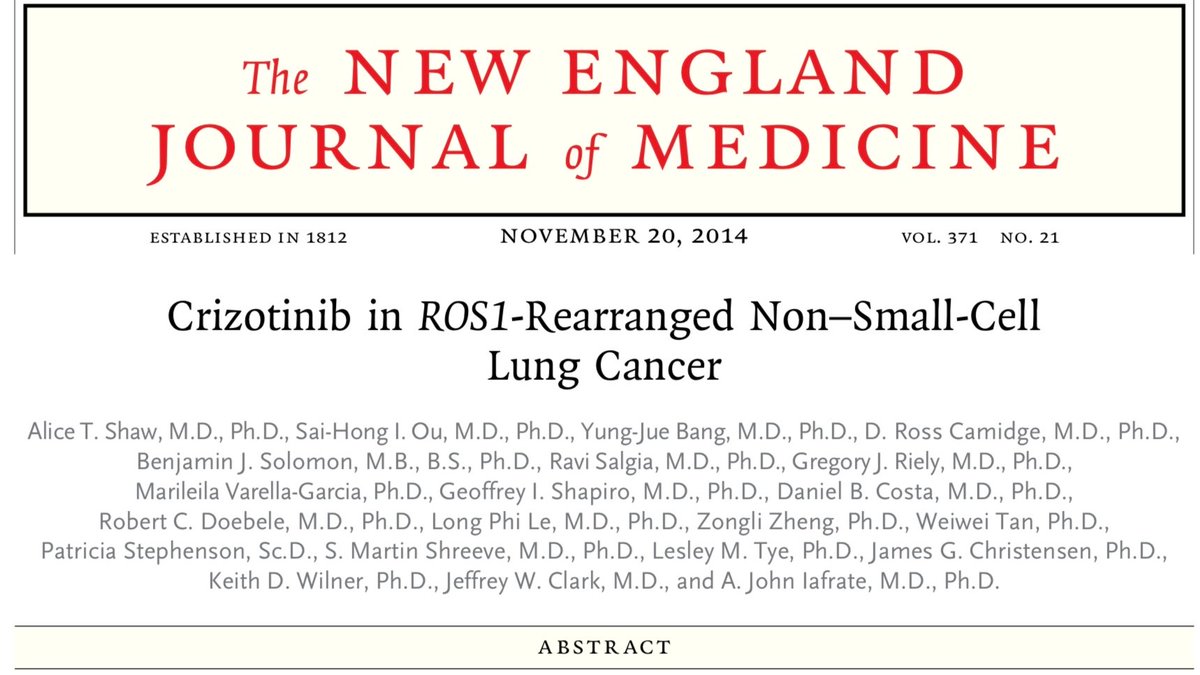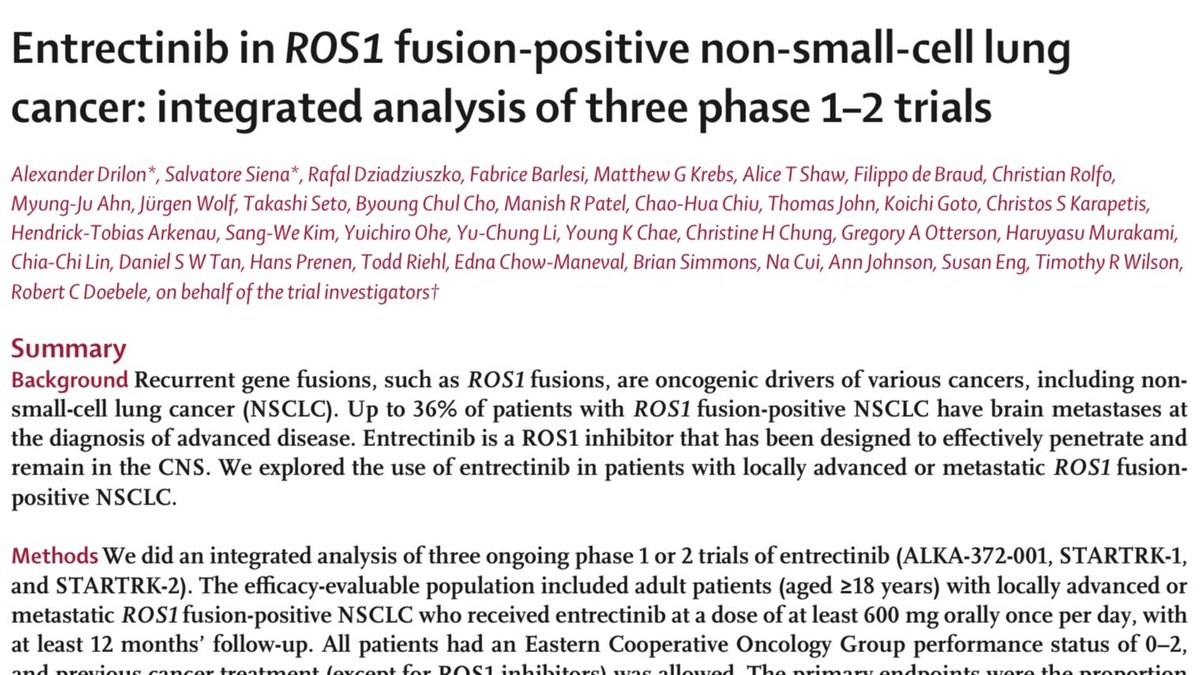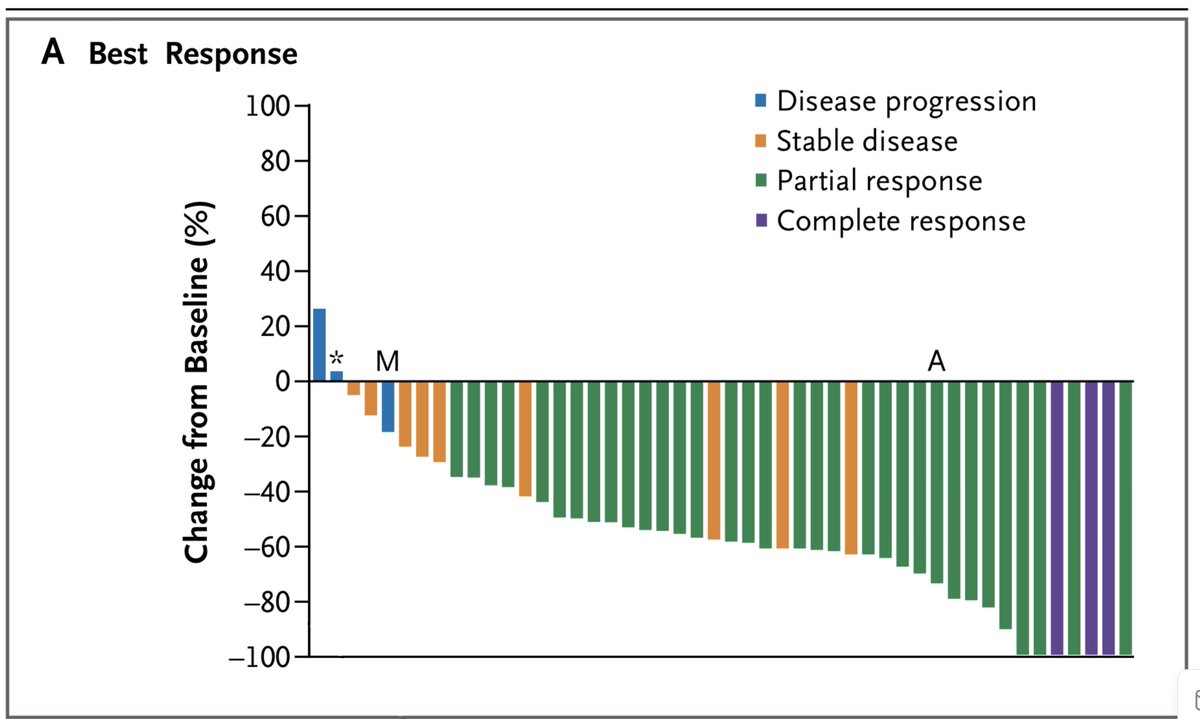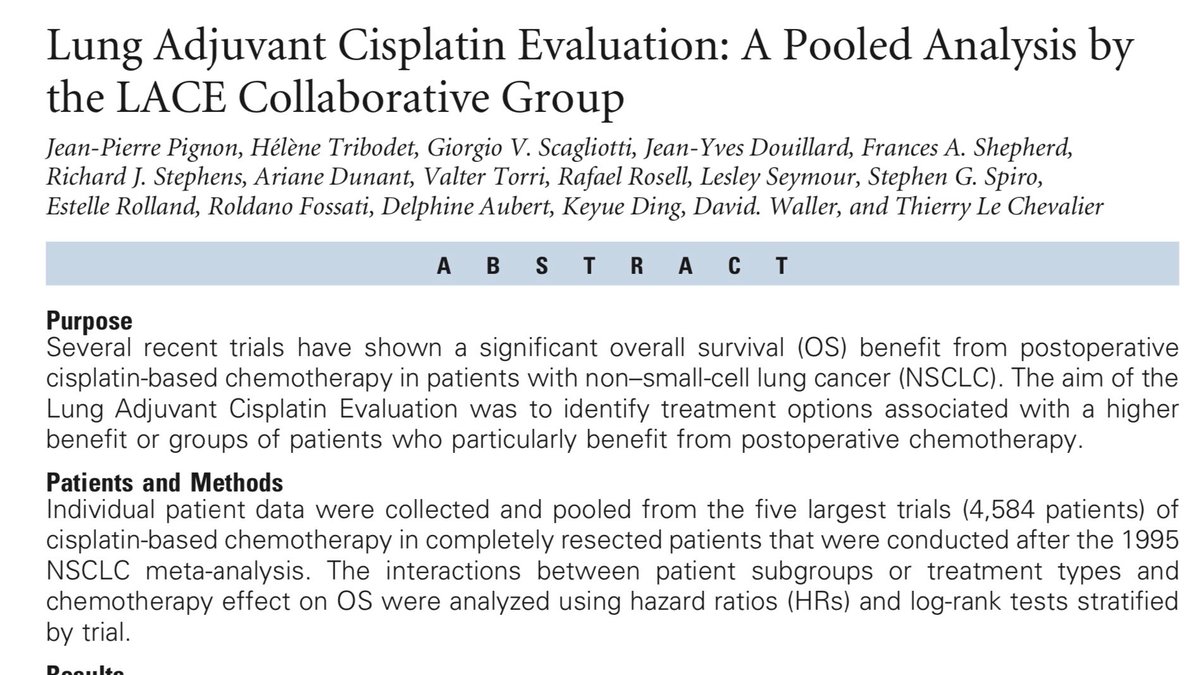
30 November: IMpower, adieu
This year for Lung Cancer Awareness Month #LCAM I’m going to summarize 30 important lung cancer trials over 30 days. These posts are directed at non-medical professionals, with descriptions of the results and of what makes a good trial. #lcsm 1/12
This year for Lung Cancer Awareness Month #LCAM I’m going to summarize 30 important lung cancer trials over 30 days. These posts are directed at non-medical professionals, with descriptions of the results and of what makes a good trial. #lcsm 1/12

I thought we’d close out the month with a trial that’s so new that its impact is not yet agreed upon, and its findings have not ossified into standard practice. It combines two strands that have run through the month: benefit of adjuvant therapy, and the advance of immunotherapy.
We have seen immunotherapy improve outcomes in metastatic NSCLC (Nov 13, 18) and locally advanced NSCLC (22 Nov) . This study moves immunotherapy earlier, into the adjuvant setting (see November 2, 14, 17, 25 for other adjuvant studies). 3/12
The IMpower010 study enrolled people who had had resection of stage IB-IIIA NSCLC followed by adjuvant chemotherapy. They were randomized to one year of atezolizumab (see 26 November) or observation. There was no placebo. 4/12
The primary outcome is time to disease recurrence. The study plan initially stated that this would be first assessed in patients of stage II-IIIA.
This was amended midway through the study to patients of stage II-IIIA with some amount of PD-L1 expression on the tumours (>1%).5/12
This was amended midway through the study to patients of stage II-IIIA with some amount of PD-L1 expression on the tumours (>1%).5/12

To me it seems dubious to change the primary outcome of a trial part way through. If new information arose about PD-L1 negative tumours then this could have been explored in a subgroup, rather than altering the primary endpoint to exclude enrolled patients from analysis. 6/12
There is a hierarchical analysis scheme whereby disease-free survival will be assessed in the Stage II-IIIa PD-L1>1% population first, then in the whole stage II-IIIa population, then the whole intention to treat population (stage IB-IIIa). 7/12
This analytic scheme drives me nuts. It’s an attempt to make what should be a subgroup analysis into a primary endpoint in the hopes of increasing the chance that the trial will be “positive”.
It potentially excludes 123 stage Ib volunteers from the primary analysis. 8/12
It potentially excludes 123 stage Ib volunteers from the primary analysis. 8/12
The altered population for the primary endpoint showed an improvement in PFS, (HR 0.66 95% CI 0.50-0.88 p=0.0039). Below is the KM curve for the more natural Intention to Treat population (HR 0.81 95% CI 0.67-0.99 p=0.040). 9/12 

You may recall discussion of the ADAURA study (14 Nov) opened the door to whether DFS is an acceptable adjuvant outcome, or whether overall survival advantage is necessary
That debate played out in the face of a DFS advantage much more impressive than we see in this study.(below)
That debate played out in the face of a DFS advantage much more impressive than we see in this study.(below)

I wouldn’t be surprised if immunotherapy is a future standard of care in the adjuvant setting. But it will require more convincing data than we see here.
1. DFS endpoint is dubious (vs. OS)
2. DFS advantage is small
3. Primary endpoint manipulated after study initiation
11/12
1. DFS endpoint is dubious (vs. OS)
2. DFS advantage is small
3. Primary endpoint manipulated after study initiation
11/12
And that’s a wrap on my 30 trials in 30 days!
Lung cancer treatment has improved a lot, though we’re not yet where we want to be.
Past improvements have been driven by randomized controlled trials, and RCTs will remain mandatory if we’re to have comparable advances in the future.
Lung cancer treatment has improved a lot, though we’re not yet where we want to be.
Past improvements have been driven by randomized controlled trials, and RCTs will remain mandatory if we’re to have comparable advances in the future.

• • •
Missing some Tweet in this thread? You can try to
force a refresh













